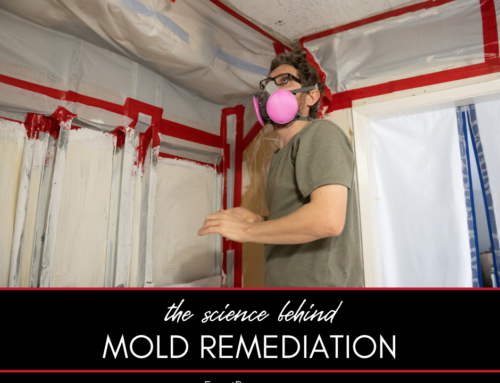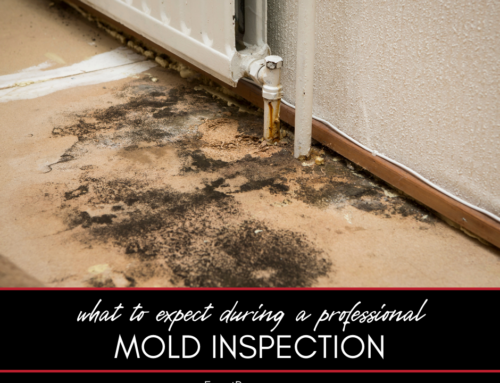You’ve seen or heard of green mold and black mold—but orange mold? Is there such a thing? Yes.
Unlike many types of molds which have a fuzzy appearance, orange mold is usually spongy and slimy, and it can grow on wood, food, and other items. Orange mold can at first look like small dark spots, but as it grows it takes on a slimy texture and an orange hue. Very often this mold grows in conjunction with other kinds of molds. That said, you may wonder: Is orange mold itself dangerous?
Effects of Exposure to Orange Mold
Like other molds, exposure to orange mold can have detrimental effects on the health of you and your family. Molds can irritate allergies and asthma, and cause asthma attacks, persistent coughing, sneezing, and congestion, as well as headaches, bronchitis, and pneumonia.
Where Orange Mold Grows
Orange mold loves to feast on wood—its favorite food source. It can target windowsills and exposed floor joists in your basement and attic—attics typically retain warmer air and humidity that rises from the lower levels of your home, which can create moisture.
Be aware that orange mold also has a big appetite for refrigerated foods—especially dairy items like cheese and yogurt. But don’t sleep—this mold can thrive on foods stored outside of the fridge that you place inside of containers on shelves. Once you discover any moldy foods inside of your fridge be sure to toss them out right away to stop the mold from spreading to other items.
Another significant thing that’s worth pointing out is that orange mold is attracted to hard water. If you have a refrigerator that provides water, or has an icemaker, it’s possible for this mold to contaminate its water filter. So be sure to have the filter replaced as recommended.
Do You Need a Disaster Remediation Expert in Washtenaw County or Jackson County?
If your home has already been damaged, we can help. Check out our services and call 517-262-3770 for your free disaster remediation quote today. We offer:









